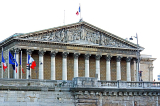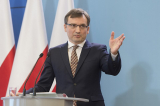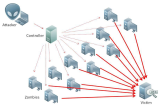
The EU's air safety agency EASA is recommending airlines and airports impose measures such as masks and social distancing to limit the risk of coronavirus for passengers.
The guidelines, produced jointly with the European Centre for Disease Prevention and Control (ECDC) and released late Wednesday, aim to be "pragmatic" while emphasising measures they want to see taken.
As well as facemasks and physical distancing, frequent hand hygiene and reassuring the flying public that "filtered air on airplanes is safer and cleaner than (the air that) many of us breathe on the ground" are important, EASA said in a statement.
"The assurance of health safety is a critical factor for the resumption of commercial air travel,” EASA chief Patrick Ky said.
The 28 pages of EASA-ECDC recommendations cover the end-to-end experience for passengers, from check-in at airports, to boarding planes and the journey itself, to arrival.
They warn that, if situations were not properly managed, there would be an increased risk of conflict that "may be due to passengers not wishing to sit next to each other or accusing each other of not following the rules".
The document said passengers with COVID-19 symptoms should not even go to the airport, and urged airlines to offer cost-free reticketing or refunds to encourage this.
Healthy-seeming passengers who do fly should expect to enter the airport without being accompanied by non-flying family or friends, wear facemasks from that point on until they leave their destination airport -- except for brief instances such as security checks -- and try to avoid touching any surfaces unecessarily.
Passengers who refuse to observe those or other recommendations, such as sneezing or coughing into an elbow or a tissue even when wearing a mask, should face being turfed out of terminals or being barred from boarding.
Self check-in and limiting carry-on luggage were also recommended.
- Physical distancing onboard -
The guidelines urged physical distance of 1.5 metres (five feet) between people, and -- "to the extent possible" -- physical distancing on board planes, except for families in the same household travelling together.
That feeds into a debate between airlines about whether to keep the middle seat free in economy to better space out passengers. Some are adopting that as a safety measure, but others say it would make their operation economically unviable.
EASA said that "if physical distancing cannot be guaranteed because of the passenger load, seat configuration or other operational constraints, passengers and crew members on board an aircraft should adhere at all times to all the other preventive measures including strict hand hygiene and respiratory etiquette and should wear a face mask".
Masks should be changed every four hours, they said -- meaning passengers or airlines doing long-haul flights might need to stock up on fresh ones.
Also, there should be no more duty free sales on board, and reduced food and drink service, with items individually packaged.
If a patient with suspected COVID-19 is identified during the flight, EASA recommended they be isolated at the back of the plane, with two rows around them cleared, and a toilet designated for them alone. Also, the air nozzle above them should be turned off to try to limit the spread of droplets.AFP








































